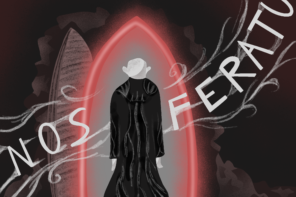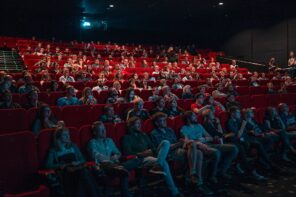The film industry has long been influenced by popular literature. Film franchises such as The Lord of the Rings, Alice in Wonderland, and Harry Potter are just a few of the most well-known movies that were adapted from books. A highly successful book can result in an extremely popular film, and, moreover, a successful book adaptation can boost the popularity of the novel it is based upon. However, book-to-film adaptations can be difficult to successfully execute, and viewers frequently take into account a number of factors when assessing whether or not a film adaptation is comparable to its novel counterpart.
Many movie-goers and devoted readers agree that a successful book-to-film adaptation is one that strives to stay as true to the original plot of the book as possible. The Divergent film series is an example of a movie franchise that drew harsh criticism from disappointed audiences for deviating too much from the plot of the source novels. The original Divergent book trilogy, which was written by author Veronica Roth, is about a dystopian society that is separated into various factions based on personality traits. The majority of the series is written from the point of view of Tris, the protagonist of the book trilogy, as she grapples with the struggle of not belonging to any one particular faction. The Divergent novels gained popularity for their thought-provoking dystopian plots interspersed with elements of action, science-fiction, and romance. However, the films are considered a failure by fans of the book series, as their plotlines differ significantly from the written trilogy. Many fans of the Divergent book series ultimately found the films to be frustrating, as the filmmakers’ decision to change plotlines and omit crucial scenes made the movies both confusing and challenging to follow.
The four movies that make up The Hunger Games film franchise are another well-known book-to-film adaptation and are often compared to those of the Divergent movie series, as they both depict the lives of teenagers living in a dystopian society. However, despite being in the same genre, The Hunger Games film series was significantly more successful than the Divergent film series. Apart from the engaging storyline and the inclusion of talented actors that portrayed the well-loved characters from the books, one of the most prominent reasons that The Hunger Games series was popular among book fans was that it remained fairly loyal to the plot of the original novels, unlike the Divergent films. Although there were a few small adjustments here and there, the plots of The Hunger Games films did not diverge considerably from those of the novels in any meaningful way.
Apart from the engaging storyline and the inclusion of talented actors that portrayed the well-loved characters from the books, one of the most prominent reasons that The Hunger Games series was popular among book fans was that it remained fairly loyal to the plot of the original novels…
Book fans may generally ignore small changes made by directors within a book-to-film adaptation, but more significant ones, such as those in Divergent, are difficult for them to overlook. For instance, in the Divergent film series, the character of Four was significantly older than he was in the books, aged twenty-four in the films instead of the eighteen-year-old teenager that was depicted in the novels. This was a significant modification that greatly impacted the plot of the film series. By choosing to increase the age of Four’s character and portray him as an adult rather than a teenager, his romantic relationship with the protagonist, Tris, who is meant to be sixteen in the film, felt unrealistic and created significant discomfort among viewers and fans of the book series.
Visual style is another element that can make or break a film adaptation. For example, in the 2019 adaptation of Little Women, director Greta Gerwig made the creative decision to use colour to help convey the story of the four sisters to her audience. The Little Women novel, which was written by Louisa May Alcott, is primarily chronological and depicts the lives of Meg, Jo, Beth, and Amy from childhood through adulthood. Rather than mirroring the novel’s chronological timeline, Greta Gerwig chose to jump back and forth between the past and present while also utilizing various distinct colour schemes and colour grading to represent the division between childhood and adulthood in her film. Despite the fact that this is different from the original novel, Gerwig’s inventive use of colour enabled a very successful film adaptation because it helped to demonstrate that growing up is not an entirely linear process and that the characters of Little Women were constantly evolving. In addition, the use of colour helped to reveal the different sides of each character, establishing their individual personalities.
… Gerwig’s inventive use of colour enabled a very successful film adaptation because it helped to demonstrate that growing up is not an entirely linear process and that the characters of Little Women were constantly evolving
There are no definitive criteria that determine whether a film adaptation is successful or not. According to what we have observed from successful book-to-film adaptations, however, there is an important balance between taking creative risks and honouring the original narrative of the source material. While many book-lovers argue that no film can ever be completely superior to its novel counterpart, films allow us to uncover various interpretations of a book’s original plot, setting, and characters, which frequently results in new insights into well-known and beloved literature.








